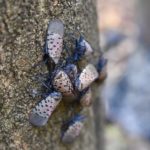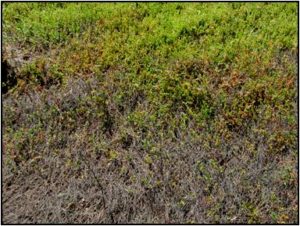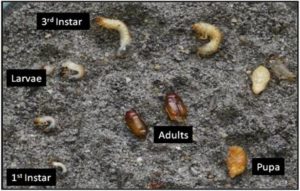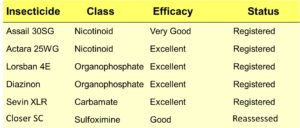Event: American Cranberry Growers Association 2018 Summer Field Day
Date: Friday August 17, 2018
Location: Rutgers P.E. Marucci Center for Blueberry & Cranberry Research & Extension, Chatsworth, NJ
AGENDA
CRANBERRY BOGS:
8:30–8:45 Opening Remarks
Shawn Cutts, President, American Cranberry Growers Association
8:45–9:10 Crop Phytotoxicity and Weed Control with Prospective Pre-emergence Herbicides for Cranberry (Bog 3)
Thierry Besancon and Baylee L. Carr, P.E. Marucci Center for Blueberry & Cranberry Research & Extension, Rutgers University, Chatsworth, NJ
9:10–9:35 Mitigation of the Ill Effects of Liquid Fertilizer with Lime Applications: Preliminary Results (Bog 5)
Nicholi Vorsa and Jennifer Johnson-Cicalese, P.E. Marucci Center for Blueberry & Cranberry Research & Extension, Rutgers University, Chatsworth, NJ
9:35-10:00 New fungicides and cultural methods for improving fruit quality (Bog 7)
Peter Oudemans, Timothy Waller, Dave Jones, Jacob Armitage, John Jensen, Dan Flath and Chris Constantelos. P.E. Marucci Center for Blueberry & Cranberry Research & Extension, Rutgers University, Chatsworth, NJ
10:00–10:25 Evaluation of Fungicide Treatments on Fruit Rot Resistant Cranberry Selections (Bog 11)
Jennifer Johnson-Cicalese, Timothy Waller, Peter Oudemans, and Nicholi Vorsa, P.E. Marucci Center for Blueberry & Cranberry Research & Extension, Rutgers University, Chatsworth, NJ
10:25–10:50 On-going Research on Sucking Insect Pests (Bog 19)
Cesar Rodriguez-Saona, Department of Entomology, Rutgers University; Vera Kyryczenko-Roth, P.E. Marucci Center; and Robert Holdcraft, P.E. Marucci Center, Chatsworth, NJ
CONFERENCE ROOM:
11:10-11-20 Cranberry Statistics
Bruce A Eklund, State Statistician, U.S. Department of Agriculture | National Agricultural Statistics Service
11:20–11:40 Advances in Cranberry Genomics
James Polashock, Research Plant Pathologist, USDA-ARS
11:40–12:00 Cranberry Fruit Chemistry and Potential Effects on Disease
Nicholi Vorsa, Jennifer Johnson-Cicalese, Karen DeStefano and Susan Vancho, P.E. Marucci Center for Blueberry & Cranberry Research & Extension, Rutgers University, Chatsworth, NJ
POLE BARN:
12:00–1:00 LUNCH
CONFERENCE ROOM:
1:00-3:00 Lab Tours (Optional)





